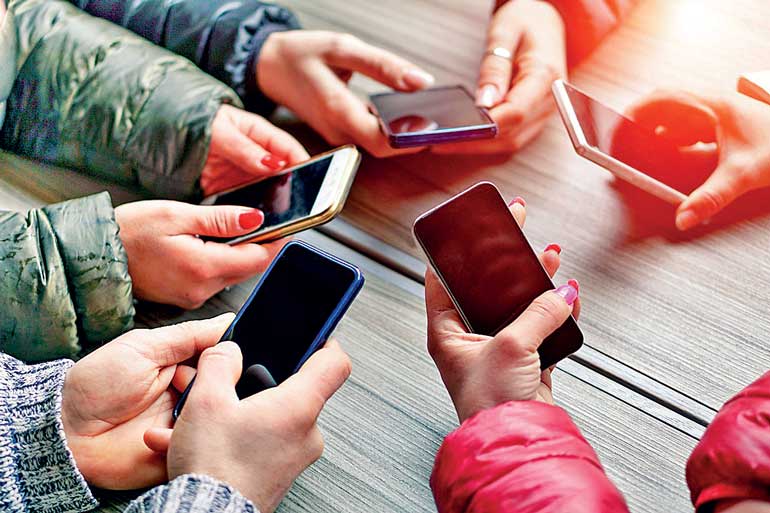Saturday Mar 01, 2025
Saturday Mar 01, 2025
Tuesday, 5 October 2021 01:32 - - {{hitsCtrl.values.hits}}

The smartphone customers of Sri Lanka are protected from illegal smartphone imports owing to a revolutionary gazette issued by TRCSL (Telecommunication Regulatory Commission of Sri Lanka).
The Gazette Extraordinary 2196/51, issued in December 2020, stipulates that the Type Allocation Code (TAC) letter issued to the manufacturer from GSMA, as a mandatory requirement for all smartphone imports. In essence the import control with TAC requirement, denotes the authenticity and originality of all imported smartphone handsets to the country.
“With the TAC requirement, smartphone customers are able to purchase a genuine device without doubts of getting a fake. Generally, customers who obtain genuine smartphones can claim warranty service from the authorised service centres as per the manufacturer’s own policy. Through genuine imports, local buyers not only gain access to genuine product but also are able to collect all promised accessories for the handset from the retailer. If the smartphone handset did not face this screening the buyer has to undergo the hassle of obtaining necessary approvals by themselves to qualify for a warranty of service, which is tedious and time consuming,” stated an industry insider.
“This is a win for customers as they are protected over a substandard product and gain original product warranties, the Customs and the government benefit in terms of tax collected, and phone identification data while the phone importers are ensured that no cheap, copied emulations of their phone handsets run amok in the marketplace. This requirement directly impacts all stakeholders of Sri Lankan smartphone market including the importers who bring down the phones legally, the Government and the consumer. Thereby, this action too therefore is often full of praise for TRCSL for its visionary mechanism since this is no less than a clear ‘win-win’ for all,” he added.
With the successful implementation of TAC requirement, TRCSL not only succeeded in verifying the authenticity of the handsets but gave more to Sri Lankan mobile smartphone market; ensuring good network performance, prevent distortion and degradation of network, avoid interference, and preserves network integrity. What is equally important was the strong stream of tax revenue ensured by TRCSL’s clever screening of devices which would otherwise be lost to the country-in billion rupees.
The industry can benefit when making policy decisions (e.g.: Tax policies and other fiscal policies) such data are available. Since this screening eliminates dumping of inferior or sub-standard handsets to the market, importers –who promptly pay import taxes for their imports-can prove the original quality of the phones they import and sell-thanks to TRCSL.
In 2020, Sri Lanka has spent $ 408 million on smartphone imports. This was even 0.78% higher than the second largest fossil-fuel category imported that year—crude oil imports at $ 405 million. While the value of imported devices was $ 408 million, the “volume” of the imported tabs and smartphones in 2020 was approximately 1,500 metric tons.
As the hunger for mobile services, especially 4G services, continues to grow in the country over the recent years, it is a little surprise that the demand curve for smartphone handsets too swiftly paralleling this upward trend. As such runaway volumes of handsets came to the country, it is convenient to think that no agency could monitor and regulate such large volumes -while ensuring that the arriving products conform to quality standards.
Despite such anxiety and doubts, one Sri Lankan State agency, TRSCL, not only ensured that the bulk of these arrivals were conforming to international standards of quality but were also genuine and authentic products from the indicated global brand.
Discover Kapruka, the leading online shopping platform in Sri Lanka, where you can conveniently send Gifts and Flowers to your loved ones for any event including Valentine ’s Day. Explore a wide range of popular Shopping Categories on Kapruka, including Toys, Groceries, Electronics, Birthday Cakes, Fruits, Chocolates, Flower Bouquets, Clothing, Watches, Lingerie, Gift Sets and Jewellery. Also if you’re interested in selling with Kapruka, Partner Central by Kapruka is the best solution to start with. Moreover, through Kapruka Global Shop, you can also enjoy the convenience of purchasing products from renowned platforms like Amazon and eBay and have them delivered to Sri Lanka.
Discover Kapruka, the leading online shopping platform in Sri Lanka, where you can conveniently send Gifts and Flowers to your loved ones for any event including Valentine ’s Day. Explore a wide range of popular Shopping Categories on Kapruka, including Toys, Groceries, Electronics, Birthday Cakes, Fruits, Chocolates, Flower Bouquets, Clothing, Watches, Lingerie, Gift Sets and Jewellery. Also if you’re interested in selling with Kapruka, Partner Central by Kapruka is the best solution to start with. Moreover, through Kapruka Global Shop, you can also enjoy the convenience of purchasing products from renowned platforms like Amazon and eBay and have them delivered to Sri Lanka.